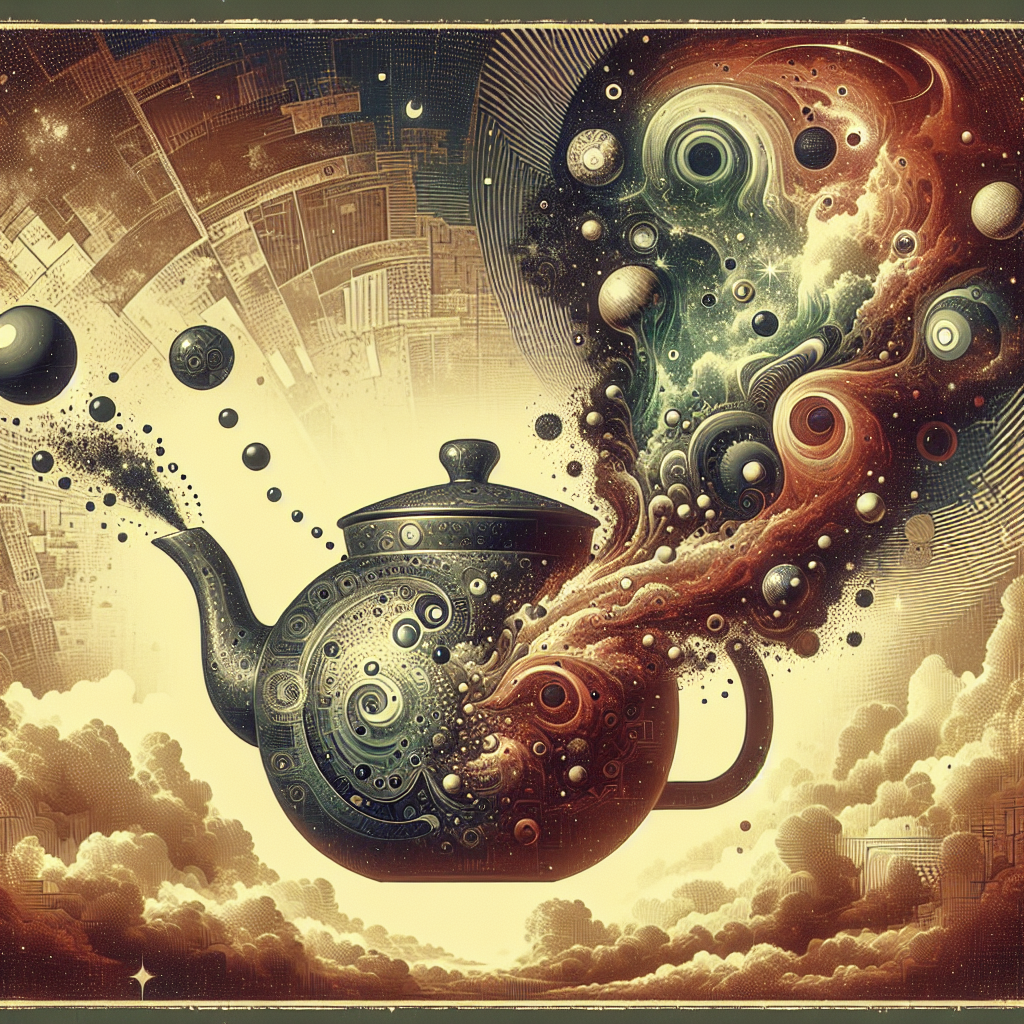From Cosmic Teapots to Critical Thinking: Understanding Russell’s Teapot
In the vast expanses of the cosmos, where countless stars dazzle like diamonds on a velvet backdrop, imagine a tiny teapot orbiting the sun between Earth and Mars! This quaint and imaginative illustration was famously proposed by the British philosopher Bertrand Russell in 1952 in an article titled "Is There a God?" published in Illustrated Magazine. But what exactly was Russell trying to say with his celestial teapot, and why has it continued to captivate thinkers, scientists, and armchair philosophers nearly seven decades later?
The Hypothetical Cosmic Brewer
At first glance, Russell's teapot may sound like the musings of a charming, albeit slightly eccentric, mind. However, there was a purpose behind this whimsical metaphor. Bertrand Russell, an influential advocate for rational thinking and scientific skepticism, crafted this analogy to argue about the burden of proof. Essentially, he pointed out that the burden lies with those making unfalsifiable claims, not with skeptics to disprove them.
Imagine someone claiming that this tiny teapot is orbiting the sun. While it might be impossible to disprove – after all, who can comb through the astronomical immensity of space to definitively declare there is no teapot? – the absence of evidence shouldn't lend the claim credibility. Russell eloquently highlighted how claims made without evidence could easily be dismissed without evidence.
Unpacking the Teapot’s Significance
In the mid-20th century, when Russell penned his thoughts, existential debates grappled fiercely with the foundations of belief, knowledge, and faith. Here, Russell's teapot becomes a powerful tool for arguing about religious and scientific assertions. By questioning the reasonable expectation for evidence, Russell laid the groundwork for modern conversations about epistemology and skepticism.
Consider the teapot as a cosmic critique of unsubstantiated claims. If someone asserted that a unicorn pranced through your backyard when you weren’t looking, it would only be rational for you to question the validity of that claim and request evidence. The same applies when examining claims of higher powers or phenomena lacking empirical evidence.
Russell’s teapot empowers thinkers to critically analyze ideas, prioritizing evidence over assumption. As such, it represents a foundation of scientific thinking—questioning until proof or evidence is presented rather than accepting an idea based solely on tradition or authority.
Why the Teapot Still Matters
In an era dominated by information and misinformation, the principles encapsulated by Russell's teapot continue to flourish like ivy in the garden of critical thinking. The proliferation of claims, theories, and stories demands that we remain vigilant and analytical, ensuring the separation of fact from fabrication.
A century after its conceptualization, Russell's teapot echoes through modern discussions alongside similar tools such as Carl Sagan's "Baloney Detection Kit" and the scientific method itself. Whether it’s evaluating scientific claims, political speeches, or ethical dilemmas, Russell’s whimsical metaphor continues to inspire critical examination and defense of rational inquiry.
Furthermore, debates around extraordinary claims are omnipresent in today's society, from conspiracy theories to pseudoscientific products, making the teapot metaphor both relevant and necessary. It encourages us to maintain an optimistic curiosity paired with an analytical mind, challenging the fantastic while celebrating verifiable truth.
Russell’s Legacy in the Quest for Knowledge
Russell's debunking apparatus is more than just a teapot—it’s a legacy encapsulating the wisdom of questioning and the elegance of inquiry. Bertrand Russell, throughout his illustrious career, contributed significantly to mathematics, logic, and philosophy, emphasizing the harmony between rational skepticism and optimistic exploration.
Although the tangible existence of the solar-orbiting teapot is limited to imagination, its conceptual value lies in stirring the pot of critical reflection. Russell’s teapot invites us to gaze into the unknown and seek evidence before awarding belief. It’s a timeless reminder that seeking truth requires patience, diligence, and optimism.
Ultimately, Russell’s teapot is not merely a philosophical exercise; it’s a clarion call for humanity to uphold the standards of reason as a guiding force in our ceaseless quest for understanding. Let it stand as a beacon of hope and inspiration, encouraging us to scrutinize what we see while delighting in every discovery we make.
Let us forever ponder the cosmic dance of teapots and the boundless frontiers of knowledge – because isn't that what makes our universe so magnificently inspiring?

